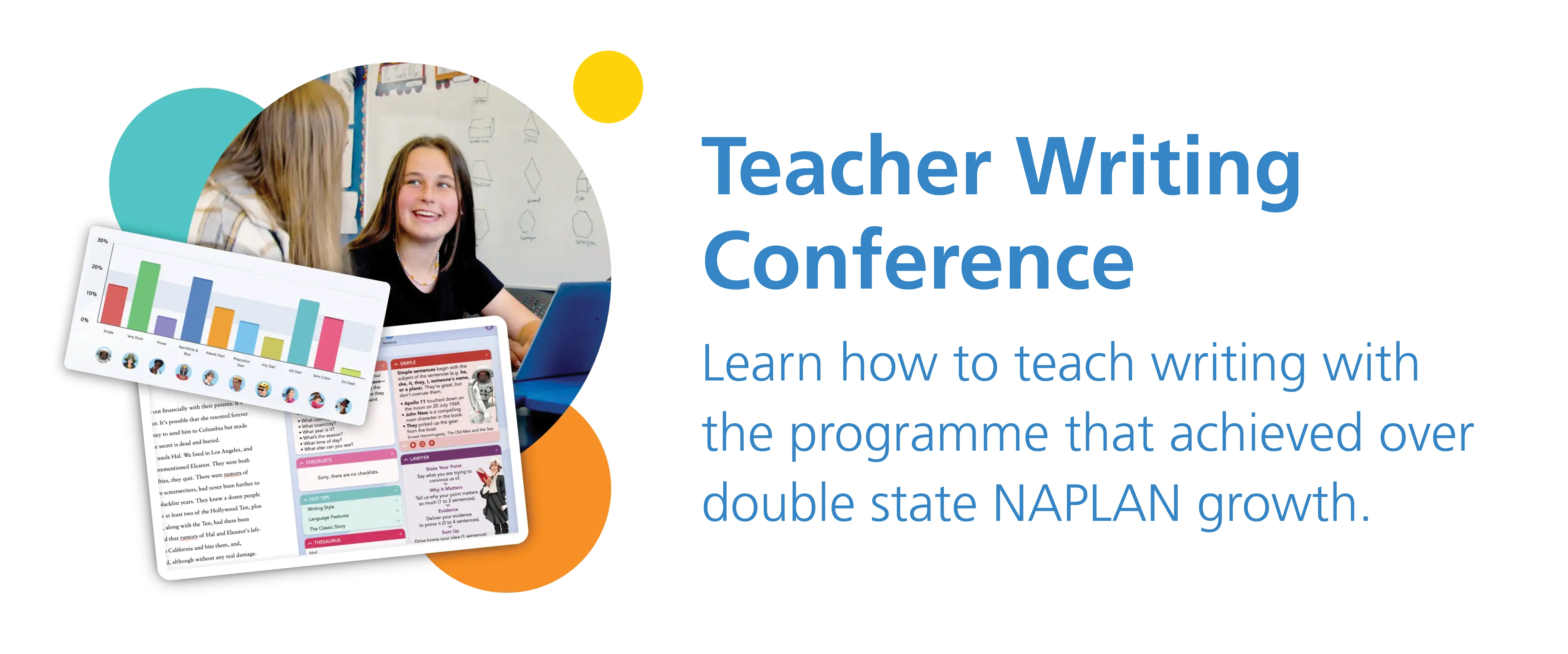
Diagnostic Testing
Educational success is seeing tangible change in student results. Our flagship diagnostic writing test gives you detailed, real-time writing data insights, whenever you need it.

If we are going to help our students progress effectively—if as a school leader you are going to plan the right sort of intervention to move your school forward—you need to work on sound information. Writing is one of those areas. Test this content
Why Diagnostic Testing
Our writing diagnostic testing provides school leaders, teachers, and students with the most comprehensive writing diagnostic data presently available. Not only will you make better decisions, you will be able to accurately report value add—and give your students the best opportunity of educational success.

Our Flagship Testing Product
Our flagship writing diagnostic test is called the Composition Skills Index (CSI). The Composition Skills Index was developed by Dr Ian Hunter in 2015 in response to schools wanting more accurate and detailed information about the state of their students’ writing performance.
School leaders expressed frustration that other testing regimes were subject to bias, or merely told schools their students had a writing problem, but never offered guidance on how to remedy those problems. Or, in the case of senior students, there was no available writing test to guide interventions. Consequently, schools were relying on examination results, which came too late to alter the outcomes for that student.
The Composition Skills Index (CSI) has changed all that, and for many schools the CSI Test is now the writing diagnostic test of choice.
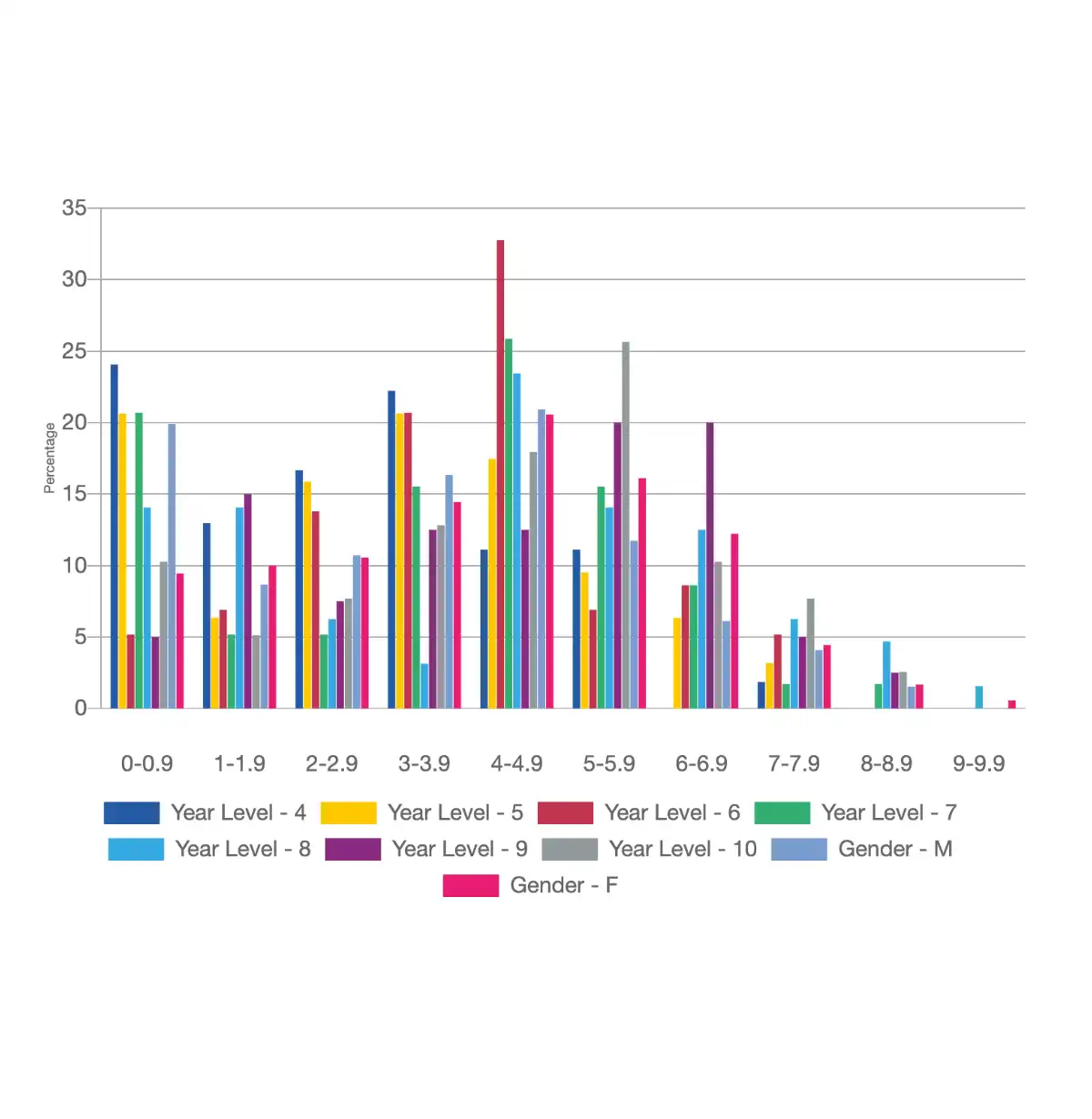
How the Test Works
The CSI is an online writing test. In response to a series of prompts, students plan a piece of writing and then compose over 20 minutes an extended writing sample that is then submitted and marked at Writer’s Toolbox. Teachers can monitor the progress of their class as students complete the test. Students undertake the test in a specially-designed interface that does not allow material to be cut-and-pasted, nor has functions like spelling or grammar checkers. What is on screen will be the student’s original work.
The test is timed—and once the countdown timer lapses, tests are automatically sent to Writer’s Toolbox for marking.
That’s right: your teachers don’t have to mark a thing. Merely wait for the comprehensive report to arrive.
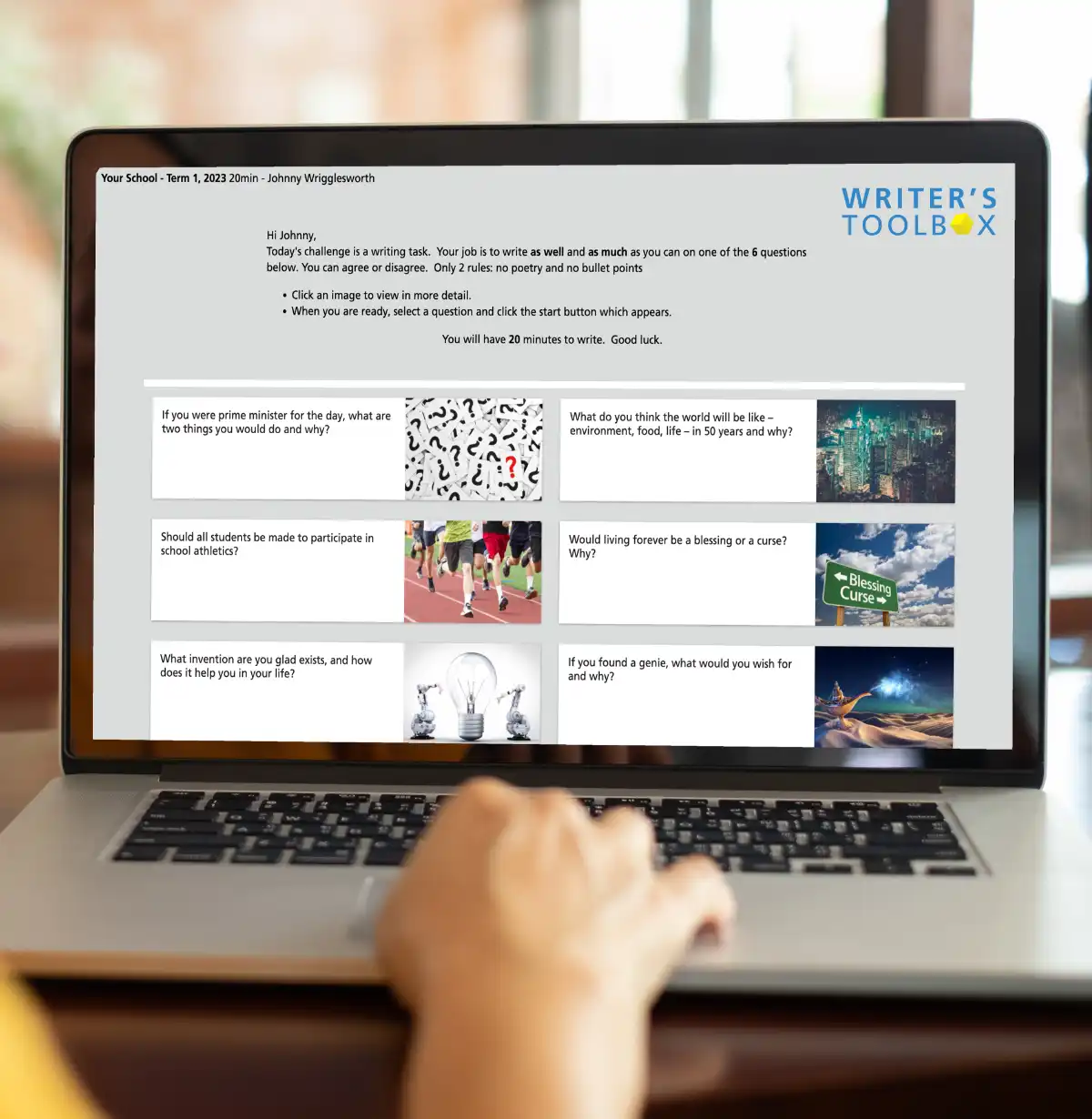
Who can sit the test
The Composition Skills Index (CSI) test can be undertaken by any student from Year 4 to Year 12 (Year 13 in curriculum systems that extend to Year 13). The question prompts and language in the test is age-appropriate, so you can be confident your student will be suitably challenged.
The planning sequence of the test is untimed to allow teachers to extend this portion of the test if required—and students can plan and add notes within the testing environment itself. If a student cannot do the CSI test on computer because of particular learning requirements, we have pen and paper options available. An additional fee applies as these scripts are manually typed for detailed analysis.

What the Composition Skills Index Measures
Dr Hunter designed the Composition Skills Index (CSI) to analyse a broader range of writing behaviours and skills than any test has been able to do so to date. Other writing tests provide information on surface features: word choice, technical errors, grammar, punctuation, spelling, or the choice of simple or complex sentences. While all this is useful, Dr Hunter could see schools wanted more.
Accordingly, the advanced methodology applied to the analysis of the Composition Skills Index was purposely designed to remove teacher bias and give schools objective data on the largest set of writing behaviours possible.
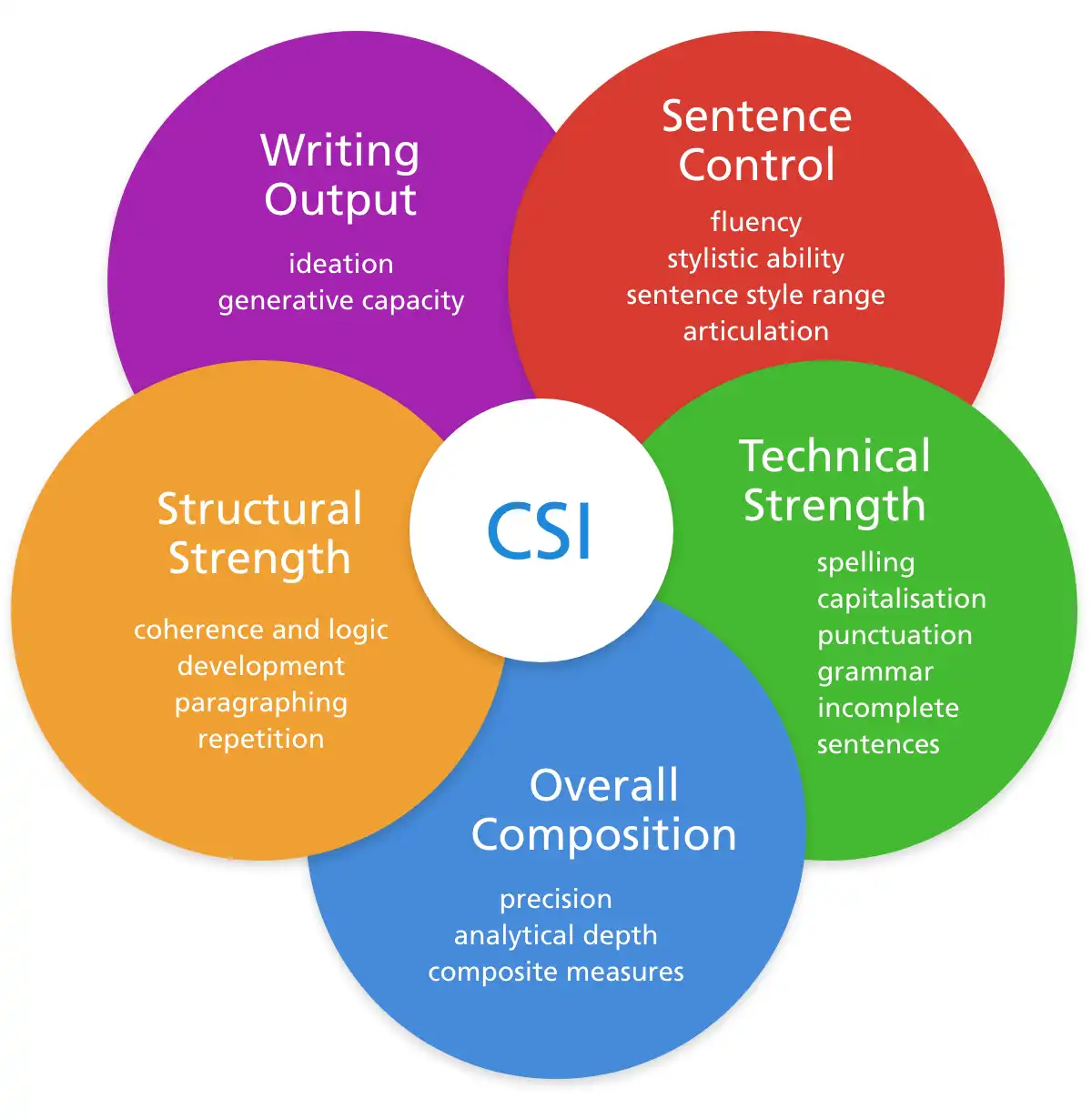
What The Composition Skills Index Reports On:
- Ideation and generative capacity
- Student ability to undertake on-demand writing tasks
- Sentence control
- Technical accuracy: grammar, punctuation, incomplete sentences
- Paragraphing control and skill
- Fluency capacity, including sentence range skill
- Stylistic ability
- Incidence of Struggling Writers in your school
- Analytical depth: expansion and development skills
- Precision
- Presence/absence generalisations
- Coherence and logic ability
- Incidence of repetition
- Incidence of waffle
- Composition Skills Index (CSI) score
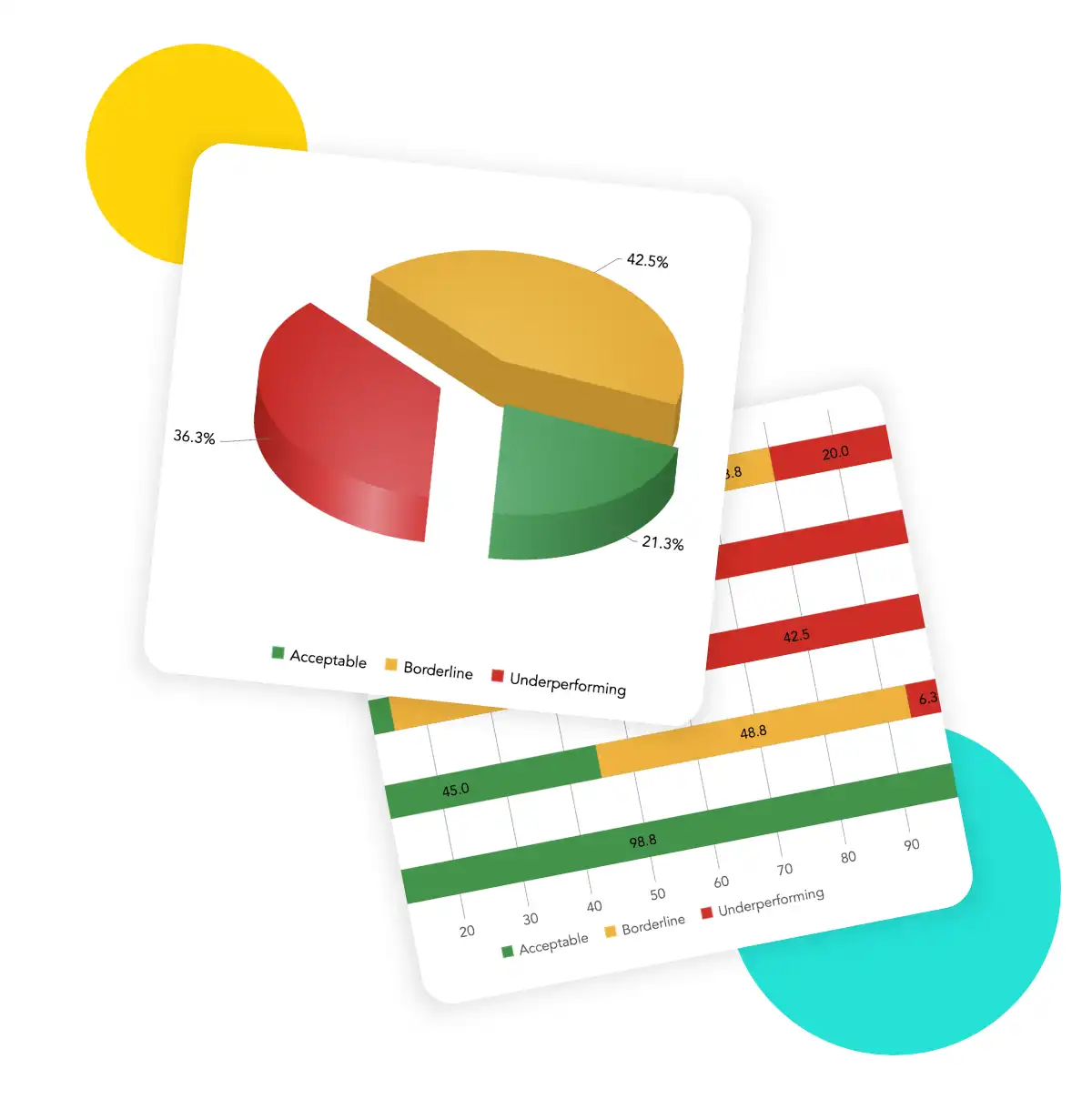
Report to School and Educators
Every one of the above metrics is reported back to your school. After years of testing and research, at Writer's Toolbox we know the expected ability levels of the above indicators for every year of schooling. We can tell you if your students are at their expected ability level, above their ability level, or performing below their expected ability level in writing. Plus, if remedial work is needed, we tell you what to do. That’s a first.

What Do I Get?
You will get a school level report that provides objective and clear information to school leaders and classroom teachers on every writing metric. You will see the patterns across your school cohorts, and we will interpret this information for you. You will receive a detailed profile of every student tested in your school, showing clear areas of strength, and areas for improvement.
Then based on your school’s data, we give you actionable recommendations to help guide your school’s interventions and writing improvement strategies. Because the reason we do all of this—every day—is to see better educational outcomes for our students: richer data, more targeted interventions, better educational outcomes.

Measuring School Progress
The penultimate score a student receives is called their Composition Skills Index Score. This number is a single number between 0 and 10 to represent the student’s overall writing ability. All CSI metrics are helpful for guiding teacher practice, and over time, revealing value add. And vitally, the CSI score gives school leaders immediate visibility of school capability and progress.
Ideally, CSI scores in a school should reveal a traditional bell curve (indicated in the graph below), with around ten per cent of students in the top end and ten per cent in the lower end. Many of our schools undertake comparative testing using the CSI Test. When retesting similar cohorts at a later date, movement of CSI scores towards a traditional bell curve is an indicator your school’s writing interventions are working. CSI score is a powerful indicator of change.
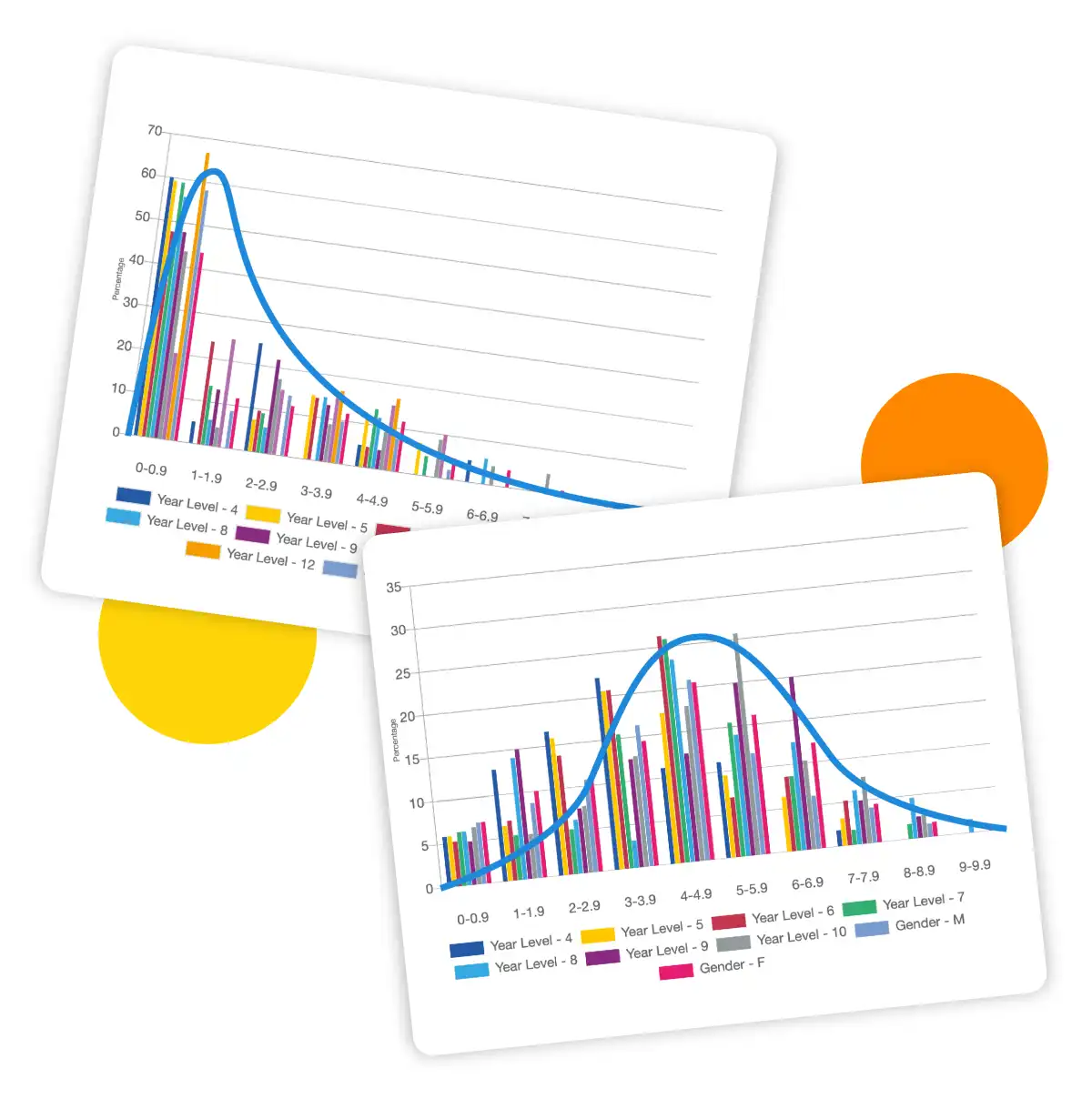
Get in Touch
You can undertake a Composition Skills Index (CSI) Test at any time. Within four weeks of your students undertaking a test, you’ll have the results—and the all-important writing report—on your desk. And immediately start to make evidence-backed educational decisions to transform writing results in your school.

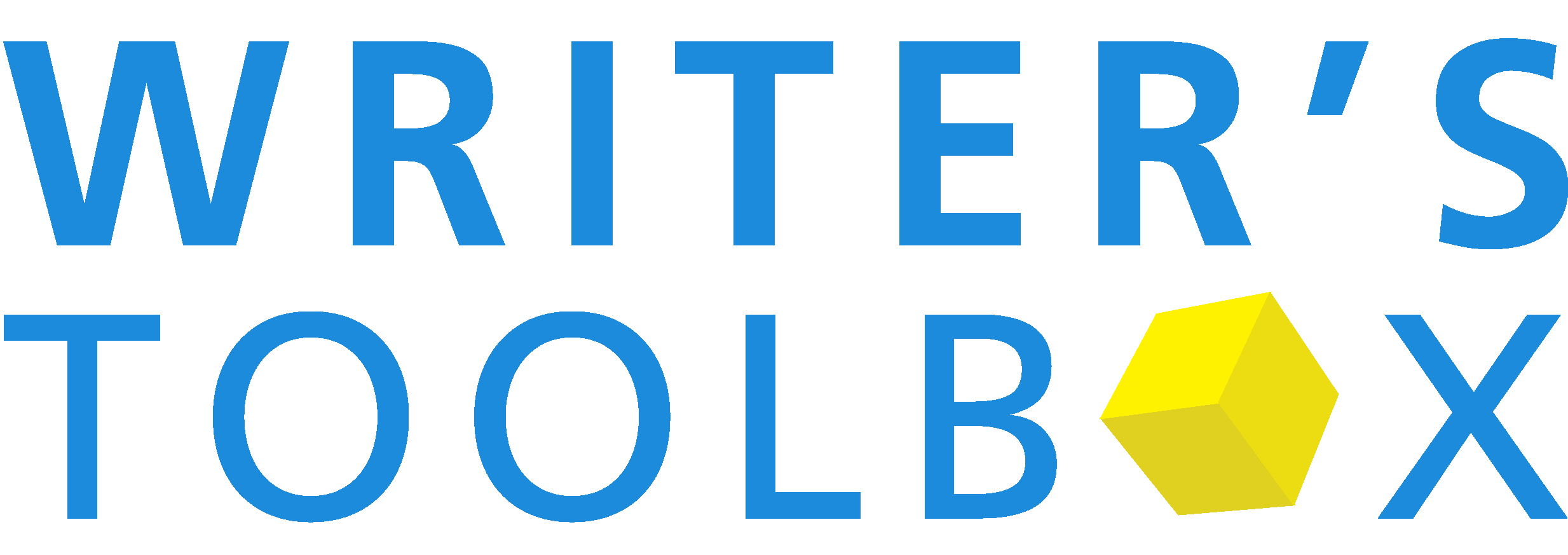


395A Manukau Road, Epsom, Auckland 1023, New Zealand
